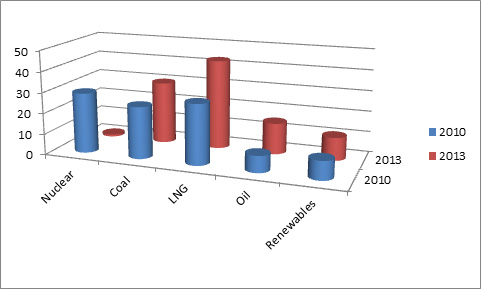Tokyo 2020 – It’s about energy stupid! in Japanese
Former Chair, Commission for a Sustainable London 2012
* Mr. Shaun McCarthy was the main guest speaker for the symposium ‘Beyond London, Onward to more Sustainable Olympics in Tokyo’ which was held on 7 April 2015 in Tokyo.
I am very grateful to my hosts at the Japan Renewable Energy Foundation for organising my recent trip to Japan so well and for their hospitality during my visit. I had a series of meetings with key players in the Tokyo 2020 Olympic programme including government ministers, senior officials and leaders of the Tokyo Organising Committee. I was also guest speaker and panellist at the International Conference they hosted in partnership with WWF.
As a child of the 1960s and a youth of the 1970s I remember the Japanese revolution well. I loved my old British motorbikes, my Triumphs, Nortons, BSAs and my prize Velocette, my ambition was to own a Vincent Black Shadow (I never achieved this but I am not dead yet so there is still time).Then along came the Honda 750 Four and the mighty Kawasaki Z1, they did not leak oil, did not break down and went like a bat out of hell. It was like bikes from another planet, the British motorcycle industry just rolled over and died. We also had Japanese transistor radios, the Sony Walkman and video recorders, the list is endless.
Tokyo hosted the Olympics in 1964 and this heralded the arrival of Japan as a world power with amazing technology and manufacturing capability. There is an expectation that they can revive their stagnant economy through hosting the 2020 Games. For me this is a massive opportunity to showcase clean technology but they need to move fast, the Games are only 5 years away.
The Olympic Games is a massive consumer of energy, although London 2012 did some great things on sustainability they blew the opportunity to do something radical about energy. There are four aspects to energy related to an Olympic Games; efficiency, grid supply, temporary power and vehicles.
Although London 2012 designed energy efficient venues the energy management during the Games was poor, as highlighted in my report. Tokyo needs to have an operational energy plan at least 18 months before the Games and for venue managers to be thoroughly trained in what they need to do. By 2020 I would expect to have an app on my tablet device showing me real time energy consumption at each venue and the confidence to know that every venue manager is looking at this every day and taking steps to minimise consumption.
Since the Fukushima disaster, Japan’s grid mix has changed radically as shown on the chart below:

There is an obvious gap in the development of renewables and an obvious opportunity to show what Japanese technology can do to fill the gap. The options are endless, from wind to solar, to fuel cells, wave and tidal power but they need to start now.
The third issue is one of temporary generation. Broadcasters expect 100% reliability of energy supply and don’t trust anybody’s power transmission and distribution systems to deliver this. That means huge banks of temporary generators (always diesel) are required to run continuously with the grid as a backup because it takes precious seconds for a diesel to start in the event of a grid failure. The Olympic Broadcast Service controls this and they do not care about the environment. It is all about security of supply. London 2012 deployed 600 diesel generator sets with an installed capacity of 270 Megawatts, these monsters consumed 4 million litres of fuel during the Games with consequent impact on climate change and air quality. Given that this scale of temporary generation will be required, Japan has five years to come up with a cleaner alternative to diesel. Hydrogen fuel cells, battery technology, alternative fuels?
The final issue is transport. London 2012 did well with logistics and deployment of river transport combined with use of electric vans and as well as they could with BMW sponsored efficient cars. The electric vehicle market was not mature enough at the time. By 2020, nothing less than 100% electric vehicles is likely to be acceptable, which means planning for charging infrastructure for 4,000 vehicles now. Ironically, I was driven to the airport by my friend, Hiroshi Ishida of Caux Round Table in a Tesla, a revolutionary American electric car. Come on Japan, where is your electric vehicle equivalent of the Kawasaki Z1?

